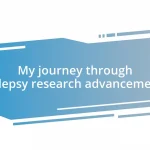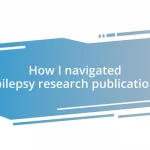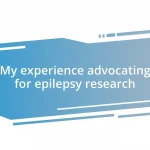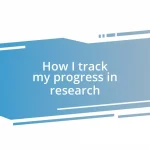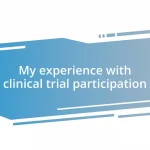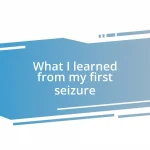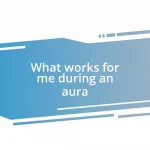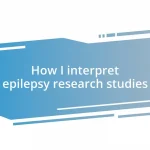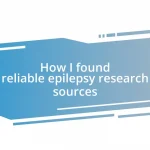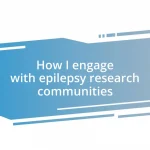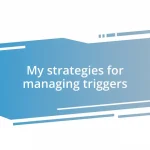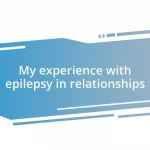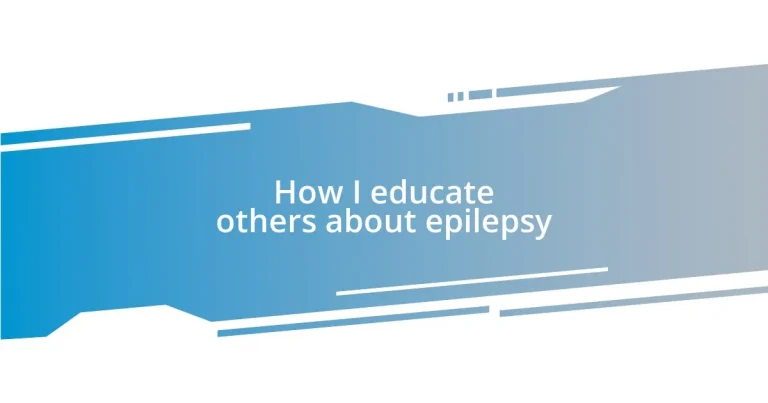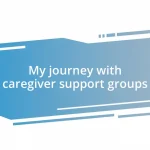Key takeaways:
- Epilepsy is a common neurological disorder affecting 1 in 26 people, yet misconceptions and stigma persist, isolating those affected.
- Misunderstandings about seizures—such as the belief that all are violent or that epilepsy is contagious—can lead to fear and misinformation.
- Effective communication strategies, including active listening and the use of relatable analogies, are crucial for fostering understanding and empathy.
- Community awareness events and collaboration with healthcare professionals are essential for educating the public and providing ongoing support to those with epilepsy.
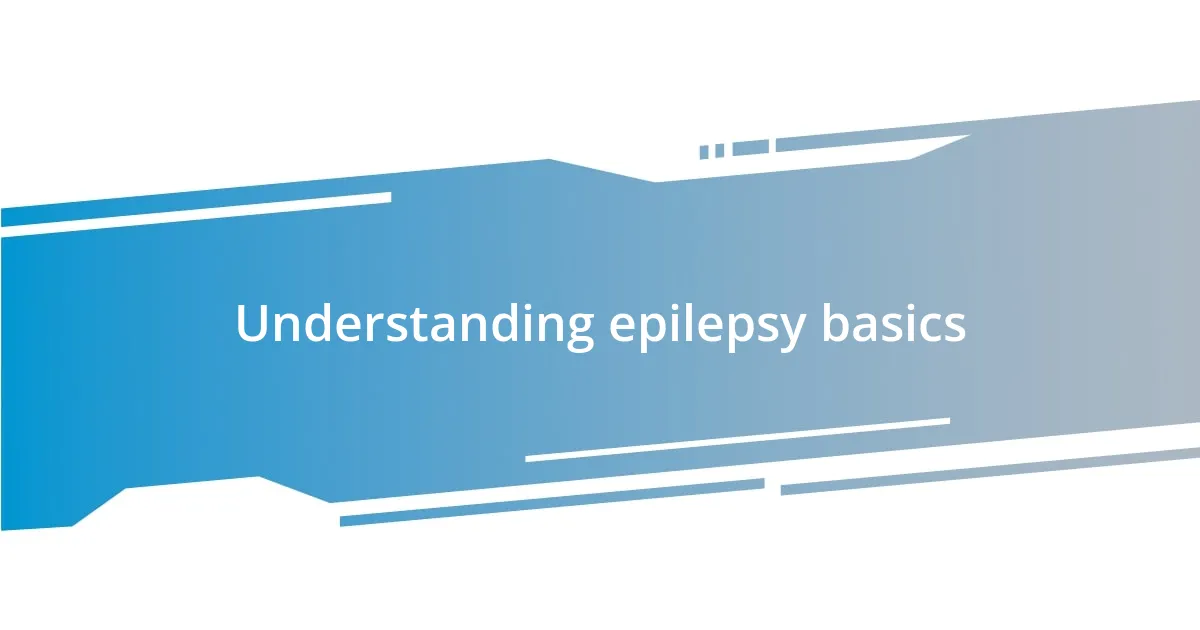
Understanding epilepsy basics
Epilepsy is a neurological disorder characterized by abnormal brain activity, which leads to seizures. For those unfamiliar with it, the term “seizure” might conjure up images of dramatic falls or convulsions, but that’s only one aspect. I remember my first encounter with someone having a seizure; I was shocked and confused. It pushed me to learn more about how varied these episodes can be, from brief lapses in attention to convulsive movements.
Did you know that epilepsy affects about 1 in 26 people in their lifetime? When I first discovered that statistic, it truly struck me. It made me realize how common this condition is, yet how little understanding surrounds it. I often find myself asking, how can we foster greater empathy and awareness in a society that largely views epilepsy through a narrow lens?
Epilepsy isn’t just about the seizures; it’s also about the impact on individuals’ lives. I have seen firsthand how the stigma and fear surrounding this condition can isolate those affected. It makes me feel passionate about creating a supportive environment where people can share their experiences without judgment. When we start conversations about epilepsy, we not only educate ourselves but also dismantle the misconceptions that often accompany it.
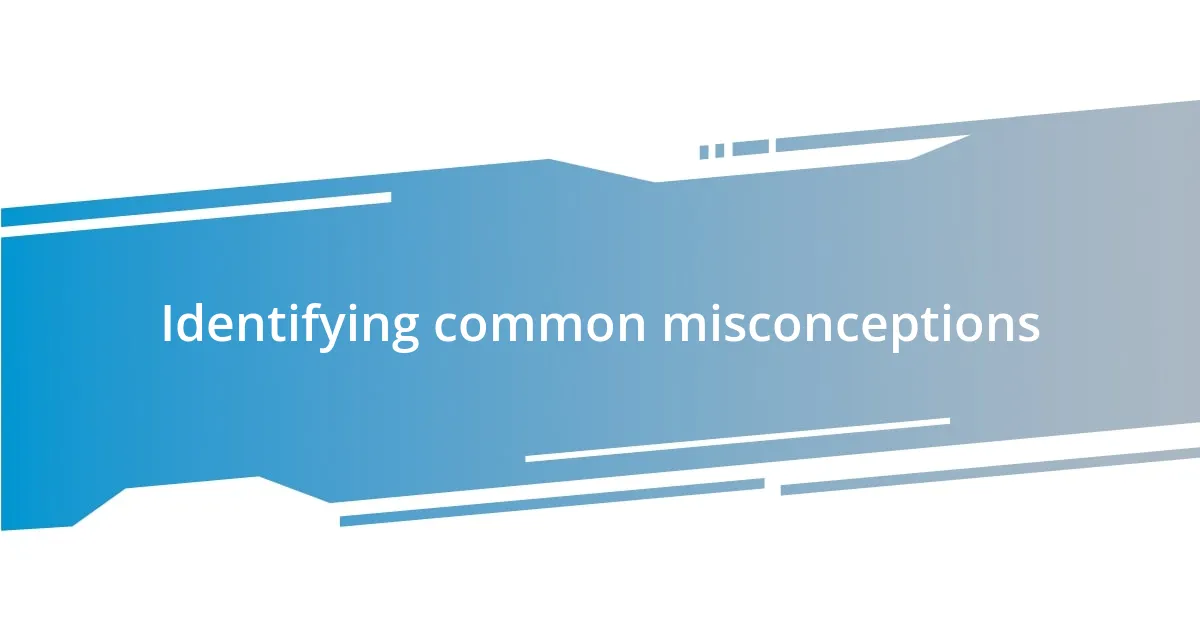
Identifying common misconceptions
Misconceptions about epilepsy can be pervasive and misleading, often leading to fear and misunderstanding. For instance, I’ve encountered many people who believe that all seizures are the same. I recall a friend who only knew about grand mal seizures, the ones with dramatic shaking and loss of consciousness. When I described my cousin’s absence seizures, where she simply zone out for a few moments, their confusion was evident. It struck me how crucial it is to share these diverse experiences to paint a fuller picture of the condition.
Here are some common misconceptions about epilepsy:
– All seizures are violent: Many people associate seizures solely with violent convulsions. In reality, seizures can be subtle and varied, ranging from brief staring spells to complex movements.
– People with epilepsy can’t lead normal lives: This idea undermines the resilience of many individuals living with epilepsy who pursue careers, relationships, and hobbies despite their condition.
– Epilepsy is contagious: This strange belief can lead to unwarranted fear and social isolation. Epilepsy is not a contagious disease; it is a neurological disorder.
– It’s caused by mental illness: The idea that epilepsy is linked to mental health issues is simply not true; it is a medical condition caused by abnormal brain activity.
– You should put something in the mouth of someone having a seizure: This myth stems from fear. In fact, doing so can cause injury. Instead, it’s best to move potential hazards away and let the seizure run its course.
Addressing these misconceptions not only helps promote understanding but also encourages compassion—a lesson that can reshape how we view and support those with epilepsy in our communities.
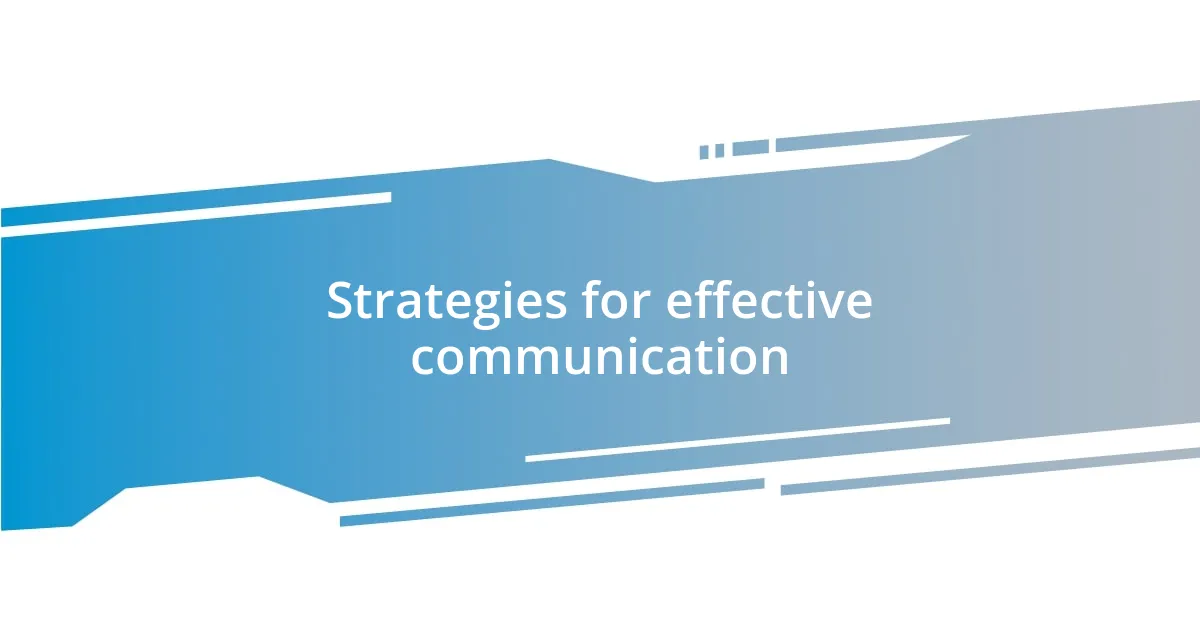
Strategies for effective communication
Understanding how to effectively communicate about epilepsy is vital. Active listening plays a crucial role; it allows the individual with epilepsy to feel heard and seen. I recall a moment when a friend shared their experience with seizures, and I made a point to listen without interrupting. It wasn’t easy, but it showed them that their feelings mattered, which helped build trust and openness in our conversations.
Informing others about epilepsy requires clarity. I often use simple analogies to explain complex ideas, like likening epilepsy to a storm that occasionally disrupts a person’s life. Recently, I explained this to a group at a community center, and the feedback was overwhelmingly positive. It’s fascinating how a relatable metaphor can break down barriers of misunderstanding and foster deeper discussions.
It’s equally important to encourage questions. When I engage others in conversations about epilepsy, I invite their curiosity. I remember leading a workshop where participants were eager to ask about triggers, treatments, and support. Each question opened up a valuable dialogue, which not only educated the attendees but also empowered those with epilepsy to share their stories. I believe that fostering this open communication fosters a supportive environment where everyone can learn and grow.
| Strategy | Description |
|---|---|
| Active Listening | Show genuine interest in personal experiences, making individuals feel valued. |
| Use of Analogies | Explain complex concepts in relatable terms to enhance understanding. |
| Encourage Questions | Create space for curiosity to foster dialogue and support learning. |
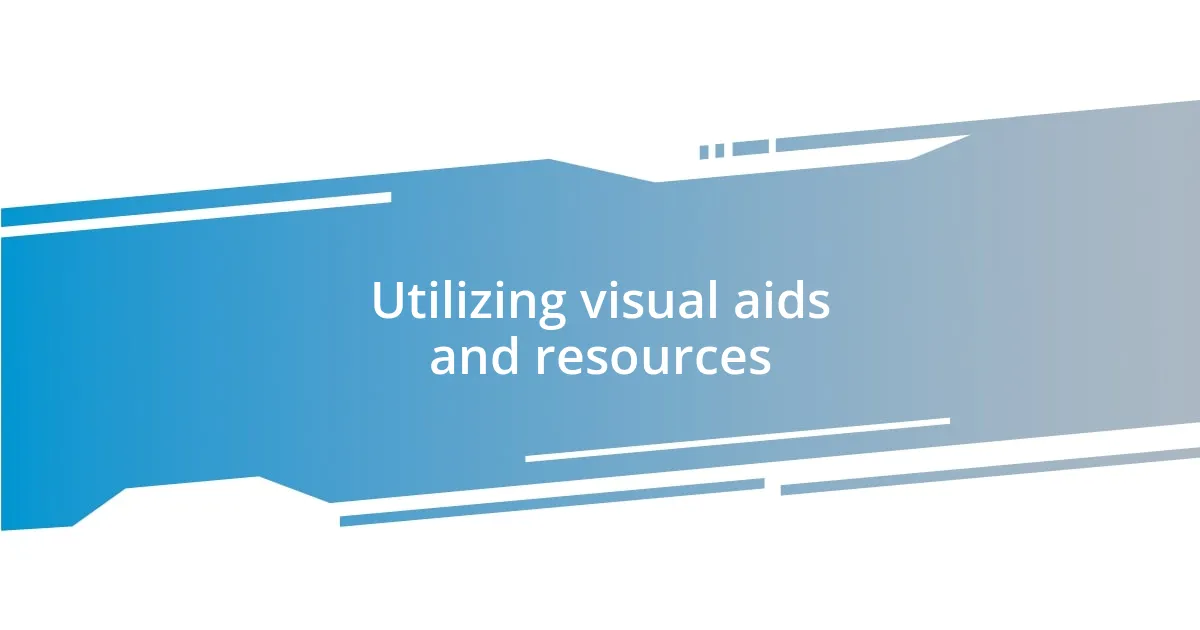
Utilizing visual aids and resources
Visual aids can be a game-changer when educating others about epilepsy. I often bring diagrams of the brain to my discussions, showcasing how different areas are affected during various types of seizures. Recently, I showed a simple chart during a community talk that illustrated the differences between grand mal and absence seizures. The audience’s engagement shot up—it’s as if the visual representation made it more tangible for them.
I also love using videos of seizure simulations to foster understanding. These clips help demystify what happens during a seizure, creating a more human connection to the experience. There was a moment in a classroom where I shared a simulation video, and I watched as my students initially reacted with shock but then with empathy. It was transformative to see their perspectives shift right before my eyes; it’s such a powerful tool.
Resources like brochures or infographics can effectively summarize essential information in a compact format. I once collaborated with a local non-profit to create an informative flyer that addressed myths about seizure first aid. Handing those out at events invited conversations beyond just the call to action on the paper. It’s rewarding to witness that initial intrigue morph into deeper discussions about how we can all be more supportive allies to those living with epilepsy. Don’t you think that such resources pave the way for a more informed community?
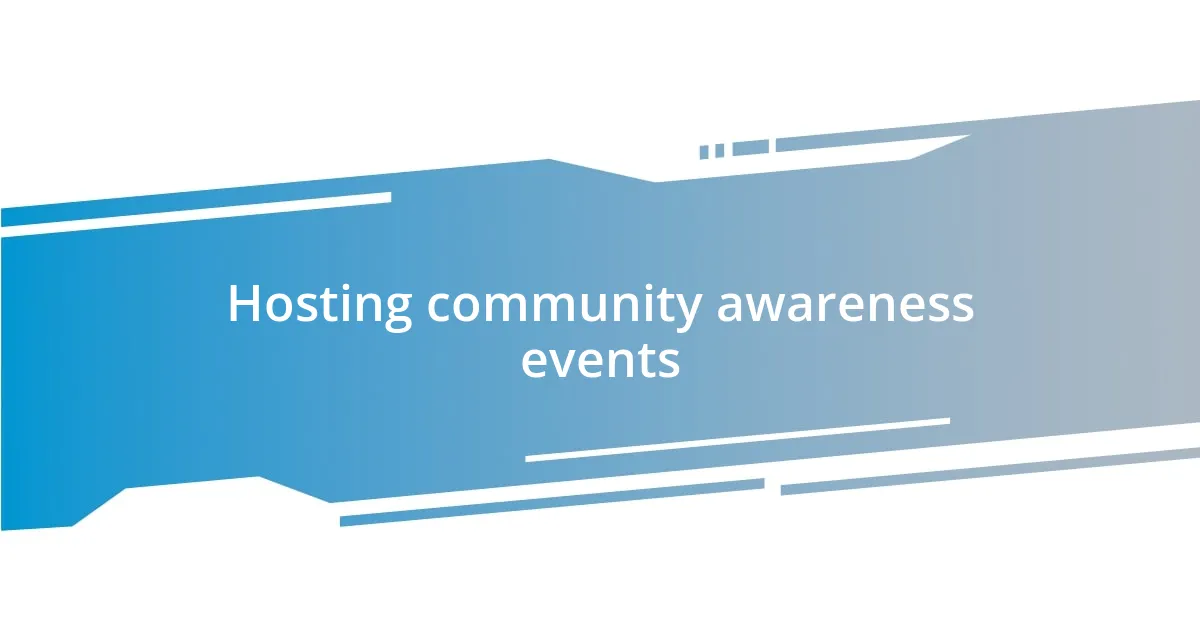
Hosting community awareness events
Hosting community awareness events can be incredibly impactful in spreading knowledge about epilepsy. I vividly remember organizing a small event at a local park, where we set up booths with informational materials. Seeing families walking through and hesitating at our stand made me realize how crucial it is to create a comfortable atmosphere. A simple smile and a warm greeting can break the ice, inviting them to engage and ask questions about epilepsy.
During one event, we invited a guest speaker who had epilepsy to share their story. I sat in the crowd, feeling the connection deepen as they spoke about their experiences with seizures and how society’s misconceptions often added to their struggles. It was heartwarming to watch the audience lean in, captivated by the sincerity and vulnerability of the speaker. Moments like those remind me that personal testimonies can resonate more than statistics, creating a bridge between understanding and empathy.
I also believe in incorporating interactive activities to elevate participation and retention. At a recent workshop, we included a quiz that challenged attendees to identify myths about epilepsy. Their surprise at how little they knew was eye-opening. It spurred conversations that lasted long after the event ended. By the end of the day, I felt a sense of accomplishment; not only were we educating the community, but we were also fostering connections that could lead to lasting change. How often do we get a chance to rethink our views and grow collectively?
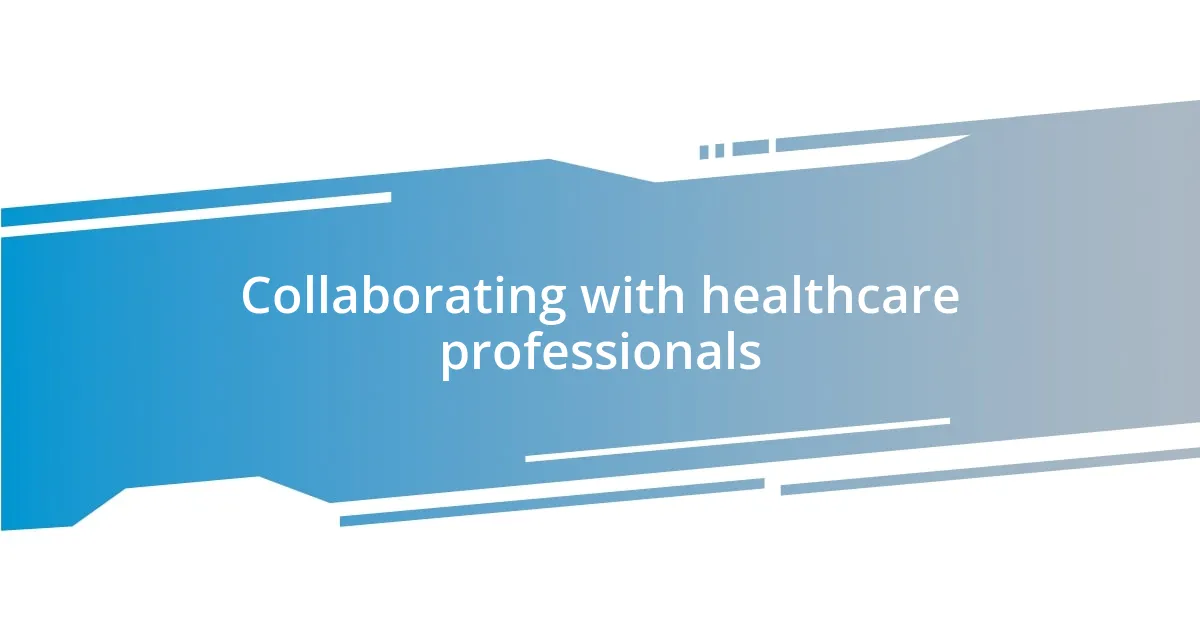
Collaborating with healthcare professionals
When it comes to collaborating with healthcare professionals, I’ve found that building strong relationships is key. I once worked closely with a neurologist for a community seminar on epilepsy, and the insight they provided was invaluable. Their ability to articulate medical concepts in layman’s terms not only enhanced the overall presentation but also enriched the audience’s understanding, which I believe is vital in educating others.
It’s fascinating how different perspectives can create a comprehensive view of epilepsy. During a roundtable discussion with nurses and social workers, I learned about the varied challenges faced by those living with epilepsy. Hearing their firsthand accounts allowed me to refine my educational materials and ensure they addressed real-life issues. I’ve realized that when healthcare professionals share their experiences, it fosters a deeper connection with the community and encourages more open dialogues among attendees. Isn’t it incredible how collaboration can unveil new layers of understanding?
Moreover, I consider regular follow-ups with these professionals essential for ongoing education. After a workshop on seizure management, I reached out to a pediatric neurologist to discuss new research findings. Engaging in that conversation not only reinforced my knowledge but also equipped me with the latest information to share with families. It’s moments like these that highlight the importance of staying informed—after all, wouldn’t we all prefer to be the most knowledgeable advocates for those in our care?
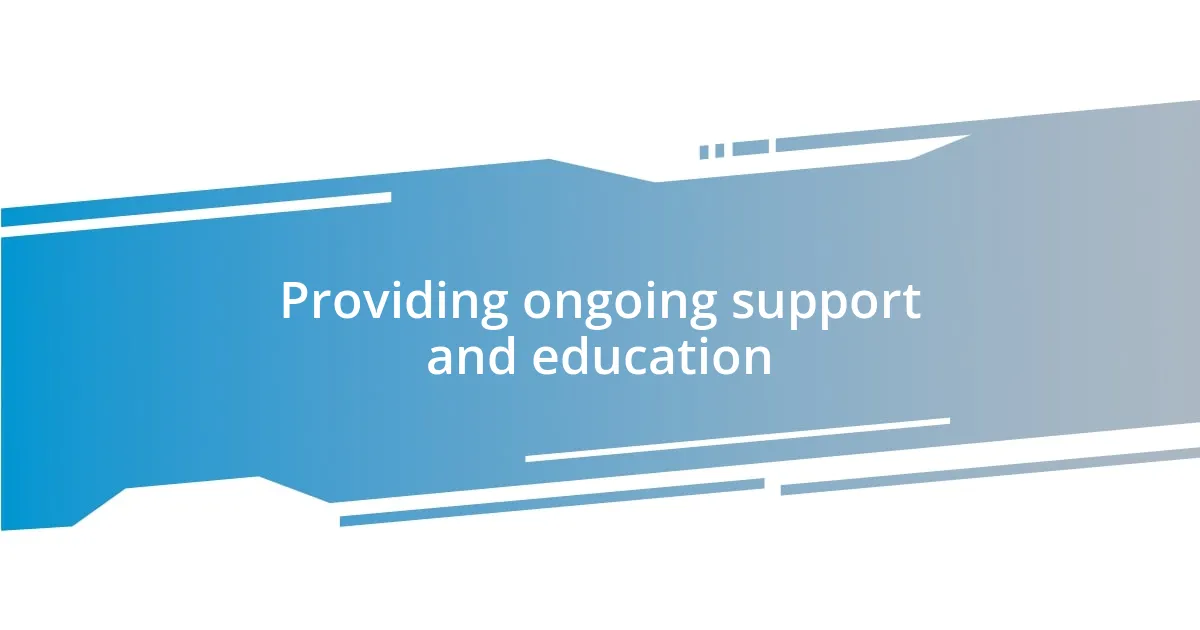
Providing ongoing support and education
Providing ongoing support and education means staying connected with those affected by epilepsy. I remember a young couple I met during a workshop; they were anxious about managing their child’s recent diagnosis. I offered to check in with them periodically, and those conversations became an anchor point for their journey. It was incredibly rewarding to provide them not just with information, but with a safe space to express their fears and uncertainties.
One strategy I find particularly effective is creating resource groups where individuals can share their experiences and support each other. At one group meeting, I witnessed a member break down while discussing the isolation they felt. Watching others rally around to offer their empathy and tips reminded me of how powerful peer support can be. It’s inspiring to see the way shared experiences nurture resilience and strength in the community. So, can we truly underestimate the impact of ongoing emotional support?
Regular newsletters and updates about new treatments or research findings are also essential. After learning about a promising new therapy, I felt compelled to share this news with my contacts through a heartfelt email. The responses I received were overwhelmingly positive, especially from families eager for hope and guidance. In those moments, I realize that staying informed transforms me from a mere educator into a valuable resource—a role I cherish deeply. How can we ever stop learning when each discovery could change a life?
